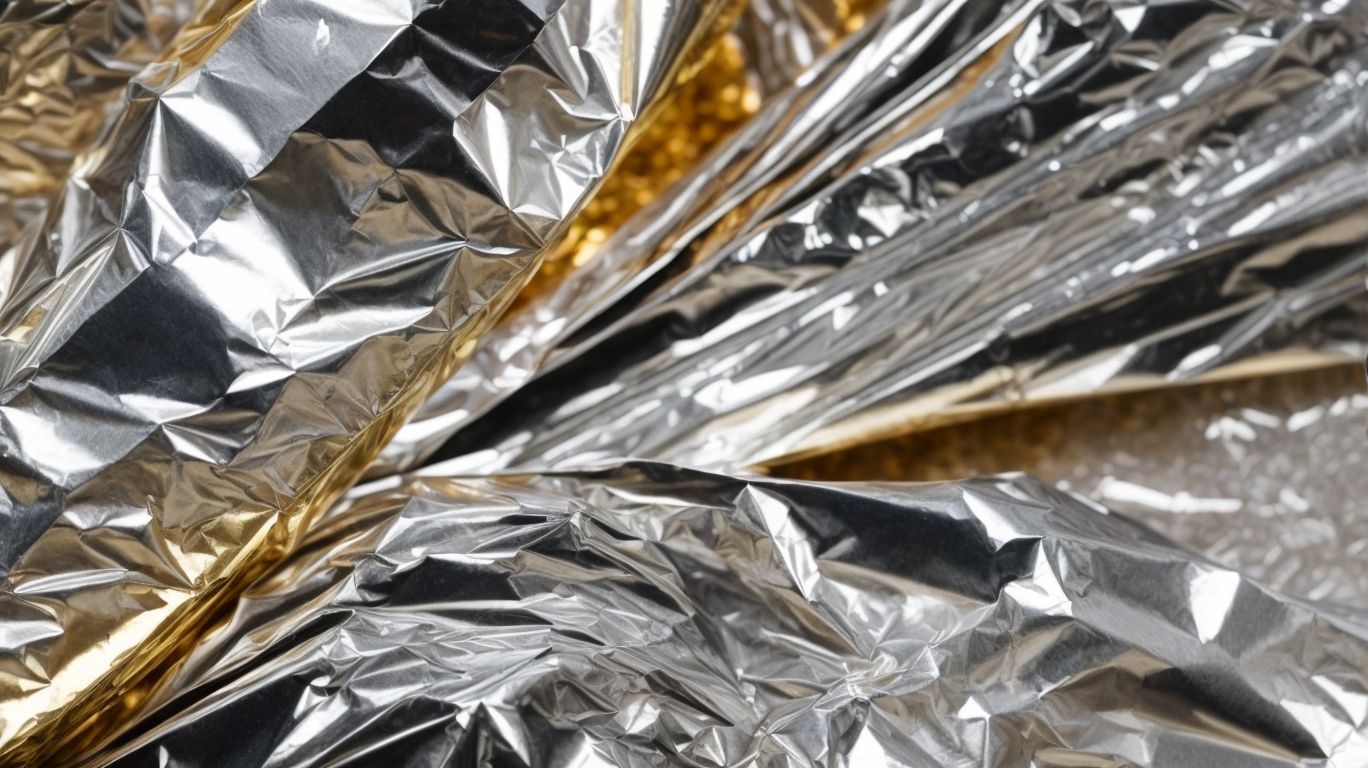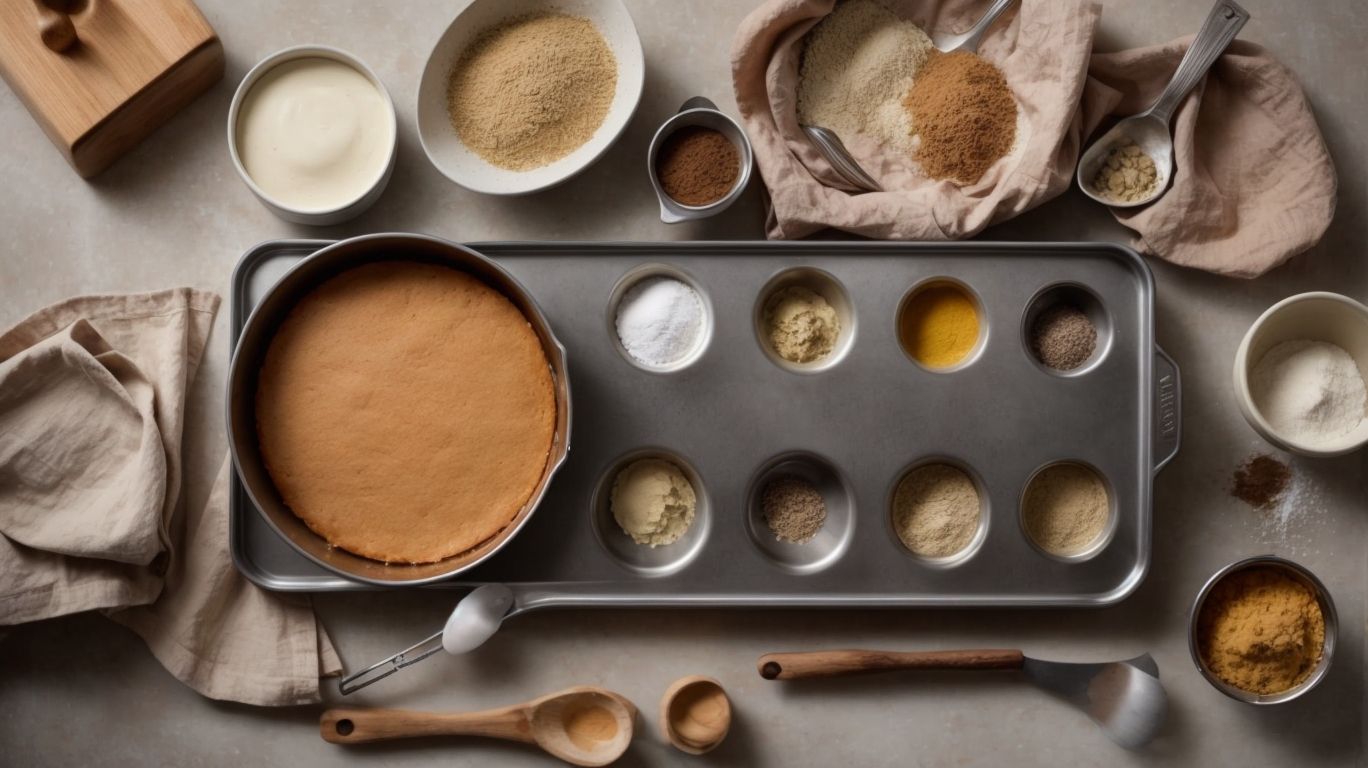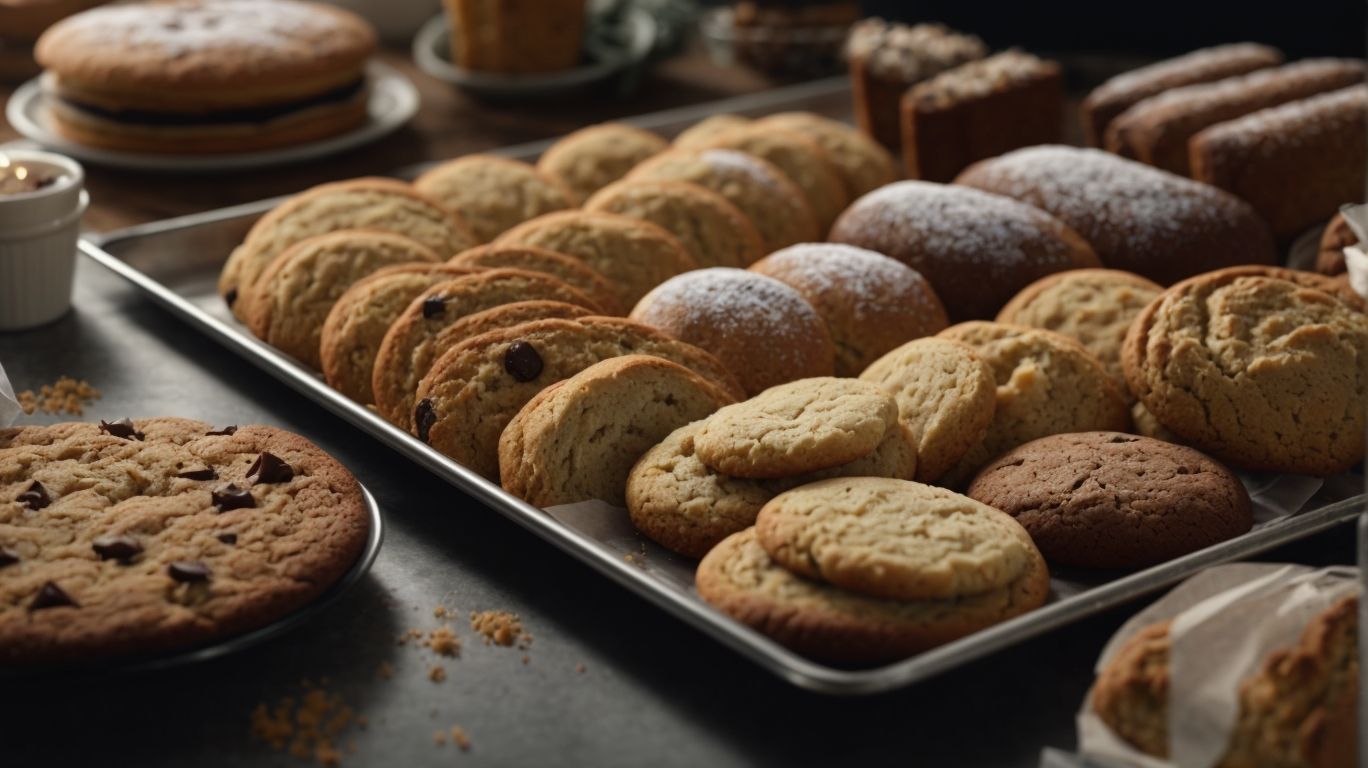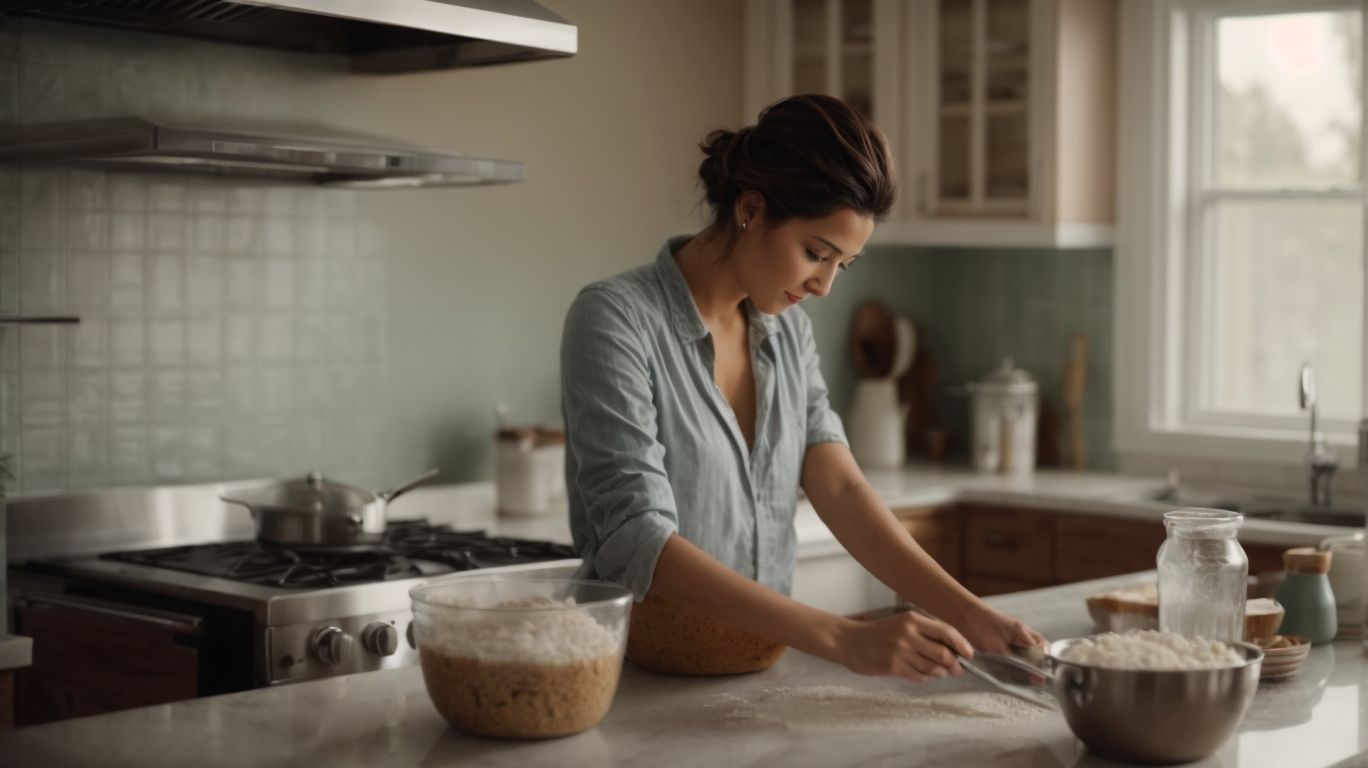How to Bake Without Foil?
Are you looking to make healthier choices in the kitchen while also being environmentally conscious?
Consider baking without foil! We explore the benefits of ditching foil for baking, including how it can be a healthier option, eco-friendly, and even save you money.
Discover alternative options such as parchment paper, silicone baking mats, and more. Learn how to prepare your baking pan without foil and get valuable tips for successful foil-free baking.
Get started on your foil-free baking journey with delicious recipes that don’t require foil. Let’s begin!
Key Takeaways:
The Benefits of Baking Without Foil
Baking without foil offers numerous benefits for your health and the environment.
Aluminum exposure has been linked to various health concerns, such as potential risks to the brain, bones, and respiratory system. By opting for foil-free baking, you can significantly lower your intake of this element. Avoiding aluminum foil also contributes to environmental preservation. Traditional aluminum foil production requires significant energy consumption and can contribute to pollution. When you choose foil-free options, you are promoting sustainability and eco-friendliness in your baking practices. This small change can have a positive impact on both your well-being and the planet.
Healthier Option
Opting for baking without foil is a healthier choice as it minimizes the risks associated with aluminum exposure, promoting better well-being.
Exposure to aluminum has been linked to various health issues, including cognitive impairment and bone disorders. By avoiding foil in your baking practices, you reduce the chances of these harmful effects on your health. Aluminum toxicity can affect different systems in the body and has been associated with neurological disorders. Thus, transitioning to foil-free baking not only benefits your overall health but also contributes to creating a safer cooking environment for you and your loved ones.
Eco-Friendly
Baking without foil is an eco-friendly practice that supports sustainability and reduces the environmental impact of disposable aluminum products.
By opting for alternative baking methods such as silicone mats, parchment paper, or reusable baking sheets, you not only eliminate the need for aluminum foil but also contribute to less waste generation. These alternative options are not only better for the environment but also more cost-effective in the long run as they can be reused multiple times, reducing your overall kitchen waste and environmental footprint. Avoiding aluminum foil in baking helps in preserving the natural resources that are used in its production, thereby leading to a positive impact on the ecosystem.
Saves Money
Choosing to bake without foil not only benefits your health and the environment but also helps you save money in the long run by reducing the need for disposable foil products.
When you opt for foil-free baking, you are not only making a sustainable choice but also contributing to cost savings in your kitchen. The cost of aluminum foil can add up over time, especially if you bake frequently. By investing in reusable baking sheets or silicone mats, you eliminate the need for constant repurchasing of foil, which translates to significant long-term savings.
These alternatives are not only eco-friendly but also cost-effective. Reusable baking sheets are durable and easy to clean, making them a practical and budget-friendly option for avid bakers looking to save money without compromising on the quality of their baked goods.
What Can You Use Instead of Foil for Baking?

Credits: Poormet.Com – Austin Moore
When looking for alternatives to foil for baking, options like parchment paper, silicone baking mats, glass or ceramic baking dishes, aluminum pans, and even banana leaves can offer effective substitutes.
Parchment paper is excellent for lining baking sheets, preventing food from sticking without the need for added oil. It also provides a non-toxic, non-stick surface that is heat-resistant.
On the other hand, silicone baking mats are reusable and eliminate the need for greasing pans, making them environmentally friendly.
Glass or ceramic baking dishes are great for even heat distribution and can go from oven to table seamlessly.
Aluminum pans are durable and conduct heat well, suitable for a wide range of dishes.
Banana leaves add a unique flavor when used for wrapping, often seen in traditional cooking practices.
Parchment Paper
Parchment paper is a popular and convenient substitute for aluminum foil in baking, offering a non-stick surface that simplifies the cooking process and eliminates the need for greasing.
One of the key advantages of using parchment paper is its non-stick properties. This feature makes it a breeze to remove baked goods from pans without any sticking, ensuring your treats come out perfectly every time.
Parchment paper is incredibly versatile, suitable for lining cake pans, cookie sheets, and even wrapping foods for steaming. Its ease of use is another plus point; simply cut it to fit your pan, bake, and discard after use, making cleanup a cinch.
To make the most of parchment paper, always use it within the recommended temperature limits and never expose it directly to flames to avoid any mishaps.”
Silicone Baking Mat
Silicone baking mats offer a reusable and eco-friendly option for baking, providing a durable surface that replaces the need for disposable aluminum foil.
These mats are not only environmentally friendly but also save you money in the long run by eliminating the need to constantly buy new foil. The silicone material is non-stick, making it easy to release baked goods without the use of additional oils or sprays. Their heat resistance allows for even baking and prevents burning, ensuring consistent results every time. To care for silicone baking mats, simply wash them with warm, soapy water or place them in the dishwasher for hassle-free cleaning. With proper maintenance, these mats can last for years, making them a fantastic investment for any home baker.
Glass or Ceramic Baking Dish
Using glass or ceramic baking dishes eliminates the need for aluminum foil while offering even heat distribution and excellent baking results.
Not only are glass and ceramic baking dishes more environmentally friendly due to their reusability, but they also do not impart any metallic taste to your dishes, unlike foil. The heat-retention properties of glass and ceramic allow for slow, steady cooking, perfect for delicate recipes like custards or casseroles.
These materials provide a more even cooking surface compared to foil, ensuring that your baked goods are cooked consistently throughout. For those concerned with aesthetics, glass and ceramic bakeware come in a variety of styles and designs, adding a touch of elegance to your kitchen and table setting.
Aluminum Baking Pan
An aluminum baking pan can serve as an alternative to aluminum foil for certain baking needs, providing a sturdy and versatile option for various recipes.
When opting for aluminum pans instead of foil, consider their durability which allows for multiple uses without tearing or deteriorating. The conductivity of aluminum distributes heat evenly, ensuring even baking throughout. This makes them perfect for dishes like casseroles or lasagnas where consistent heat distribution is vital.
Their practicality shines through in scenarios where a sturdy base is required, such as when baking heavy cakes or roasting meats. Remember that aluminum pans can be reused, making them an eco-friendly baking option. To maximize their performance, ensure proper greasing and temperature management.
Banana Leaves
For a unique and natural twist in baking, banana leaves can be utilized as a creative substitute for aluminum foil, infusing dishes with a subtle tropical flavor and aroma.
Using banana leaves in baking not only adds a delightful fragrance to your dishes but also offers an eco-friendly and sustainable alternative to traditional methods. In various cuisines worldwide, banana leaves have been employed for centuries as a versatile cooking tool, thanks to their ability to impart a distinct essence to food.
How to Prepare Your Baking Pan Without Foil?

Credits: Poormet.Com – Thomas Perez
Prepping your baking pan without using foil involves greasing the pan, using parchment paper, or opting for a silicone baking mat to ensure your baked goods release easily and cook evenly.
When greasing your pan, use a pastry brush or paper towel to spread a thin layer of butter or oil evenly across all surfaces. This prevents sticking and helps create a golden crust.
If you prefer a more sustainable option, parchment paper is your friend. Simply cut it to fit the pan, ensuring all corners are covered for easy removal later.
For those looking for a long-lasting solution, investing in silicone baking mats is a game-changer. These mats can be reused, eliminate the need for greasing, and distribute heat evenly for consistent baking results.
Grease the Pan
Greasing the baking pan with butter, oil, or cooking spray prevents sticking and ensures easy removal of baked goods without the need for aluminum foil.
Butter is a classic choice for greasing pans, adding a rich flavor to the baked items. Simply take a small amount of butter and spread it evenly across the pan’s surface using a paper towel or brush.
Oil, such as vegetable or canola oil, is another popular option that works well for greasing pans. Apply a thin layer of oil to the pan, ensuring all areas are covered to prevent sticking.
Cooking spray offers a convenient alternative, providing a quick and even coating.
Use Parchment Paper
Parchment paper serves as a versatile and non-stick solution for lining baking pans, eliminating the need for aluminum foil and simplifying the cleanup process.
One of the key advantages of using parchment paper is its unmatched convenience. Unlike aluminum foil, parchment paper naturally promotes a non-stick surface, preventing cakes, cookies, and other baked goods from sticking to the pan. This not only ensures easy removal but also preserves the shape and appearance of your creations.
Parchment paper is eco-friendly as it is biodegradable and compostable, making it a sustainable choice for environmentally-conscious bakers. When fitting parchment paper into a baking pan, make sure to cut it to the correct size and use gentle folds or creases to accommodate corners and edges. Secure the paper by lightly greasing the pan before laying it down, allowing it to adhere smoothly.
Line with Silicone Baking Mat
Silicone baking mats provide a reusable and sustainable option for lining baking pans, offering a non-stick surface that promotes even baking without the use of aluminum foil.
Durability is one of the key benefits of silicone baking mats, as they can withstand high temperatures without warping or deteriorating. This feature makes them a long-lasting kitchen essential that saves money in the long run. Their heat resistance ensures consistent baking results and prevents uneven browning. Cleaning silicone mats is a breeze – simply wipe them with warm soapy water or place them in the dishwasher. Storing them is also convenient, as they can be rolled up or stacked without taking up much space in your kitchen.
Tips for Baking Without Foil
When baking without foil, it’s essential to adjust time and temperature, use thicker batter or dough, consider covering with a lid or foil tent, and utilize a water bath for certain recipes.
Baking without foil can be a rewarding challenge, opening up possibilities for creative adjustments in your baking routines. One key tip is to monitor your oven closely as you experiment with new settings post-foil removal. Be prepared to potentially increase baking times or adjust temperatures to achieve the desired texture and doneness in your dishes.
Optimizing batter consistency is another crucial element when going foil-free. Aim for a slightly thicker batter or dough compared to recipes that call for foil; this can help retain moisture and ensure even baking without the aid of aluminum foil.
Adjust Baking Time and Temperature
When transitioning to baking without foil, ensure to make adjustments in both time and temperature to account for the different heat distribution and cooking dynamics.
Eliminating aluminum foil from your baking process may seem like a small change, but it can have a significant impact on your final results. Without the foil acting as a barrier, the heat is distributed differently, affecting the baking time and overall outcome of your dish. When adjusting your time and temperature settings, remember that it’s not just about increasing or decreasing numbers; it’s about finding that perfect balance to ensure your creations turn out just as delicious as you envision.
To fine-tune your baking parameters for foil-free success, start by experimenting with slightly lower temperatures and shorter cooking times. Keep a close eye on your baked goods as they cook, looking for visual cues such as browning or rising patterns. Remember that oven temperatures can vary, so it’s essential to monitor your creations closely and make adjustments as needed. With patience and practice, you’ll soon master the art of baking without foil, achieving perfectly cooked dishes every time.
Use Thicker Batter or Dough
Opting for thicker batter or dough consistency can help in maintaining the structural integrity of baked goods when baking without foil, providing better support during the cooking process.
Thicker batter holds its shape better during baking, preventing items like cakes, bread, or pastries from collapsing or spreading too much without the support of foil. This denser texture compensates for the absence of the usual foil lining that provides additional stability.
To adapt recipes for this purpose, consider adding a bit more flour or reducing liquid ingredients slightly to achieve the desired thickness. Mixing techniques such as creaming or folding can help incorporate air into the batter while maintaining the required density for successful foil-free baking.
Cover with a Lid or Aluminum Foil Tent
In the absence of foil, covering baking dishes with a lid or creating a foil tent can mimic the heat-trapping effects of foil, promoting even cooking and moisture retention.
When using a lid to cover the baking dish, ensure that it fits snugly to create a seal that traps heat and steam inside. This helps in cooking the food evenly and keeping it moist throughout the process.
For a foil tent, tear off a large enough piece of foil to cover the dish loosely, leaving some space between the foil and the food inside. This allows for air circulation while still capturing heat to prevent drying out.
Use a Water Bath
Utilizing a water bath technique in baking can help regulate temperature, prevent overheating, and maintain moisture levels without relying on aluminum foil for insulation.
Creating a water bath involves placing the baking dish or pan inside a larger pan filled with hot water before placing it in the oven. The water around the dish acts as a buffer, absorbing heat and distributing it evenly to the contents inside the dish. This process helps to prevent sudden temperature changes that can lead to cracking or drying out of delicate desserts like custards, cheesecakes, and flans.
For those looking to try this method without using aluminum foil, opt for recipes that require gentle and consistent heat, such as cheesecakes, custards, puddings, and certain types of cakes. These recipes benefit greatly from the even heat distribution and moisture retention provided by the water bath technique.
Recipes That Don’t Require Foil for Baking

Credits: Poormet.Com – Mark Wilson
Explore delicious baking recipes that don’t rely on foil, such as Lemon Garlic Baked Chicken, Roasted Vegetables, and Chocolate Chip Cookies, offering flavorful options that showcase the versatility of foil-free cooking.
When choosing to bake without foil, the Lemon Garlic Baked Chicken recipe brings a zesty and aromatic blend that permeates the juicy chicken pieces, creating a mouthwatering dish perfect for a family dinner or gathering.
The Roasted Vegetables recipe promises a symphony of colors and flavors as the natural juices caramelize, enhancing the sweetness of each vegetable bite.
For dessert, the Chocolate Chip Cookies exemplify gooey goodness without the need for foil, yielding a perfect balance of chewy and crispy textures that are bound to be a crowd-pleaser.
Lemon Garlic Baked Chicken
The Lemon Garlic Baked Chicken recipe offers a flavorful and aromatic dish that doesn’t require aluminum foil, showcasing how natural ingredients and proper seasoning can elevate the baking experience.
When preparing the Lemon Garlic Baked Chicken without foil, it’s vital to start with the right mix of seasonings. Garlic, lemon zest, thyme, and a pinch of paprika can work wonders in bringing out the savory flavors of the chicken. Mix these ingredients with olive oil to create a well-seasoned marinade that will infuse the meat with rich taste.
Allow the chicken to marinate in the mixture for at least 30 minutes in the refrigerator. This step ensures that the flavors penetrate the meat, making each bite burst with delightful notes of citrus and herbs.
In terms of baking, preheat the oven to 375°F (190°C). Place the marinated chicken on a non-stick baking sheet to prevent sticking and promote even cooking.
Roasted Vegetables
Roasted Vegetables present a colorful and nutritious dish that can be baked without foil, allowing the natural flavors and textures of the vegetables to shine through in every bite.
When choosing vegetables for roasting, opt for a colorful variety such as bell peppers, carrots, zucchini, cherry tomatoes, and red onions. These vibrant options not only contribute to the visual appeal of the dish but also offer a diverse range of flavors and textures once roasted.
For seasoning, consider a blend of olive oil, minced garlic, herbs like thyme or rosemary, salt, and pepper. Toss the vegetables generously in this mixture to ensure even coating before spreading them out on a baking sheet.
To enhance caramelization without using foil, preheat your baking sheet in the oven before adding the vegetables. This initial heat transfer aids in browning the vegetables’ sugars and achieving that desirable crispy texture.
Chocolate Chip Cookies
Indulge in the classic favorite of Chocolate Chip Cookies baked without foil, delivering warm, gooey treats with crispy edges and melty chocolate chips that are perfect for any occasion.
For baking these delectable cookies without foil, the quality of ingredients plays a crucial role. Opt for high-quality chocolate chips, pure vanilla extract, butter, and all-purpose flour for the best flavor and texture. The mixing technique is equally important to ensure a perfect blend of dry and wet ingredients. Creaming the butter and sugars, then gradually adding the dry mixture, will result in a well-balanced cookie dough.
In terms of baking, precision is key. Preheat your oven to the exact temperature specified and monitor the baking time carefully to achieve the ideal balance of soft centers and crispy edges. Remember not to overcrowd the baking sheet to allow for proper air circulation and even baking.
As for variations, feel free to experiment with different types of chocolate, nuts, or even a sprinkle of sea salt for a unique twist. Once baked, let the cookies cool before storing them in an airtight container at room temperature for up to a week.
Serve these delightful foil-free Chocolate Chip Cookies with a glass of cold milk, a scoop of vanilla ice cream, or simply on their own for a satisfying treat that will surely please any cookie lover.
Frequently Asked Questions
How to Bake Without Foil?
Baking without foil is actually quite simple and can produce delicious results! Follow these steps to bake without foil:
1. Prep your baking pan by greasing it with butter or oil.
2. Use parchment paper to line the pan, making sure it covers the bottom and sides.
3. Place your food or baked goods on the parchment paper and bake as usual.
Why should I bake without foil?
Baking without foil can have several benefits. Firstly, it reduces waste and is more environmentally friendly. Additionally, it can produce a crisper texture for foods like roasted vegetables. It also allows for easier clean-up as the parchment paper can be discarded after use.
Can I use something other than parchment paper?
Yes, there are other options for baking without foil. You can use a silicone baking mat or even a layer of butter or oil on the pan itself. These alternatives can still help prevent sticking and make clean-up easier.
Will my food stick to the pan without foil?
Using parchment paper or one of the other alternatives mentioned above can help prevent sticking. However, it is important to properly prep your baking pan by greasing it before adding the parchment paper or alternative.
Can I still make foil packets without foil?
Foil packets are a popular method for cooking foods like fish or vegetables on the grill. While you can’t use foil, you can still achieve a similar result by using parchment paper and wrapping it tightly around the food. Make sure to leave a small opening for steam to escape.
Are there any foods that should not be baked without foil?
Some foods, like casseroles or baked pastas, may require foil to prevent the top from burning. However, you can still try using parchment paper or a silicone baking mat on the bottom of the pan to prevent sticking and make clean-up easier.

